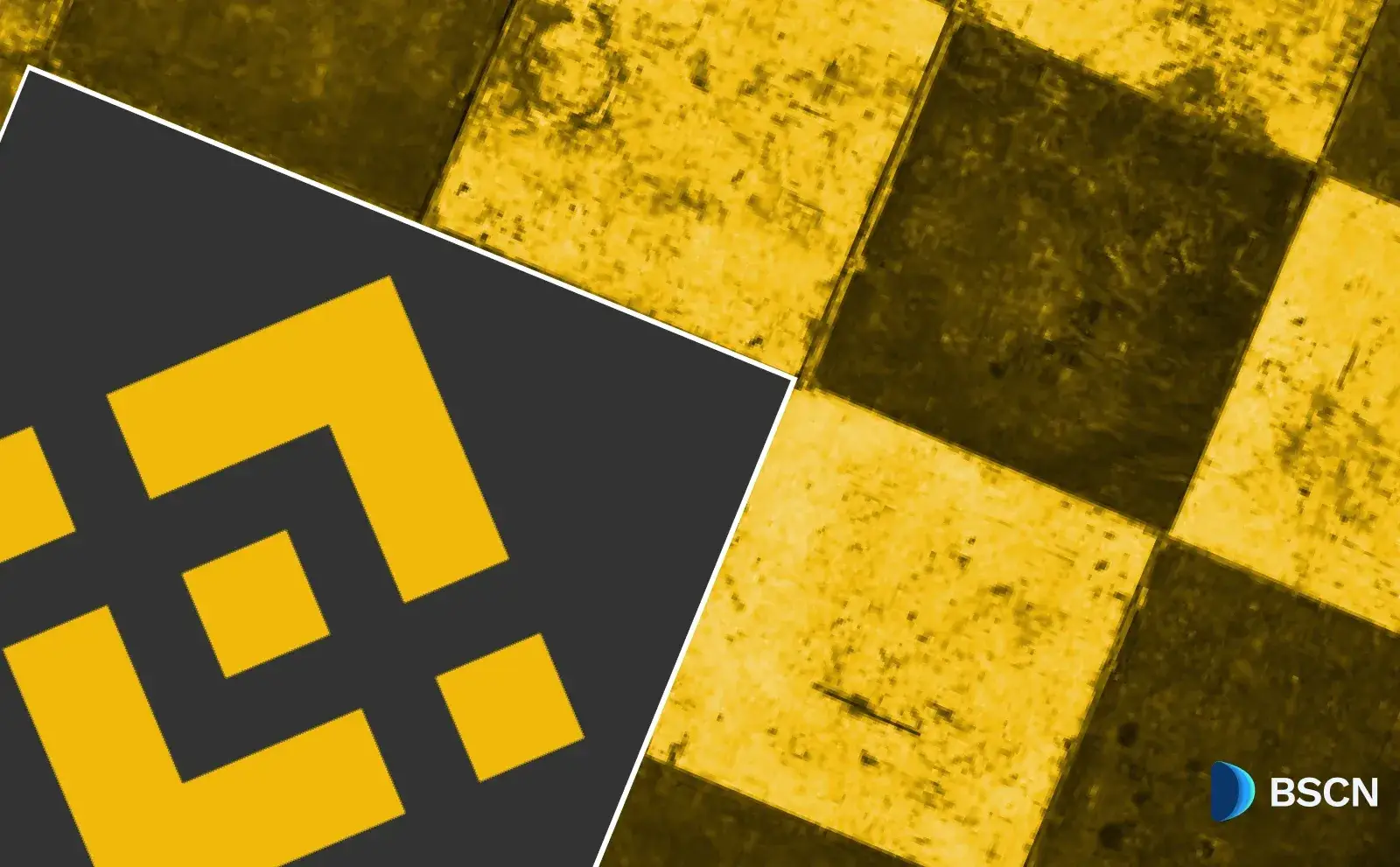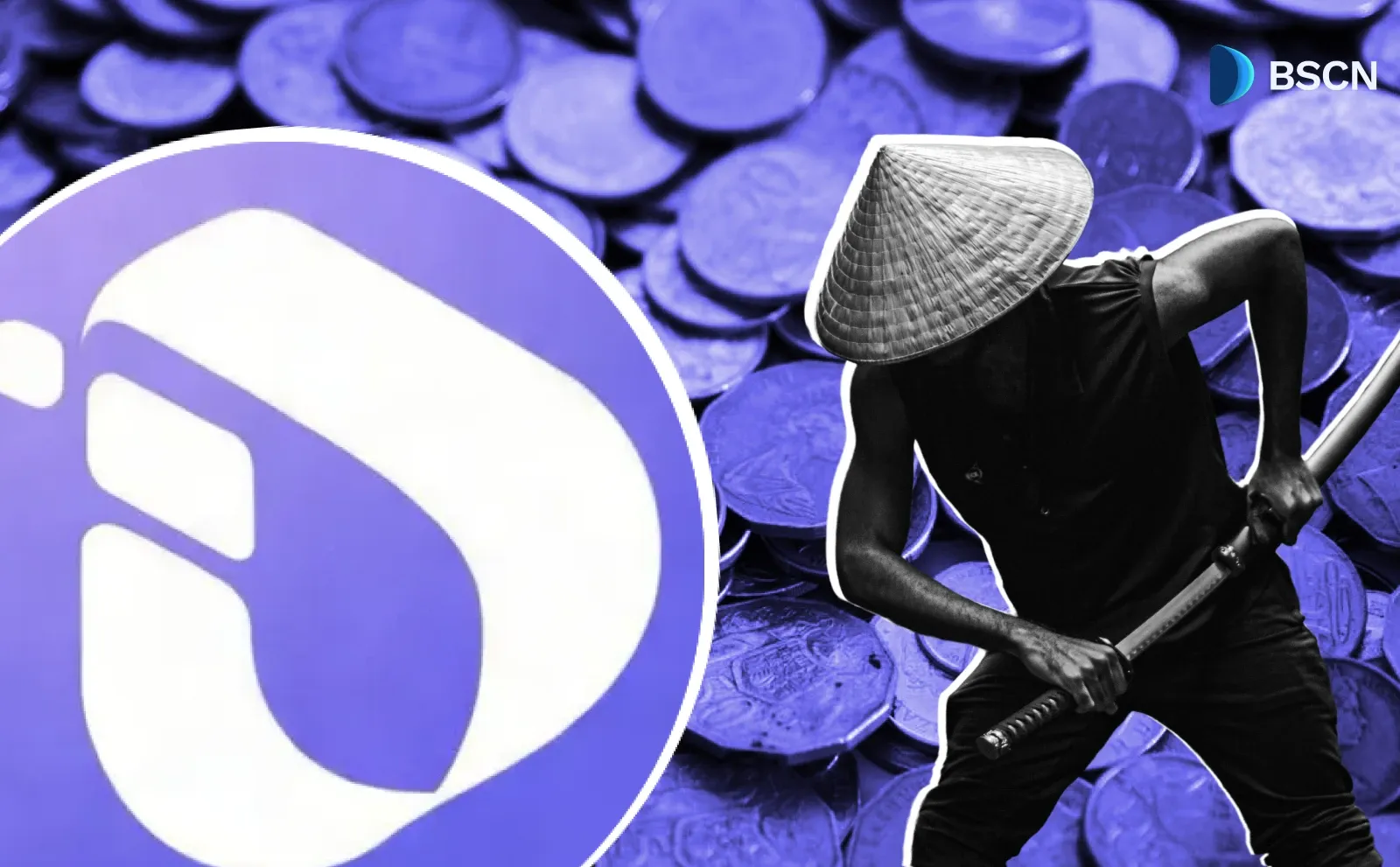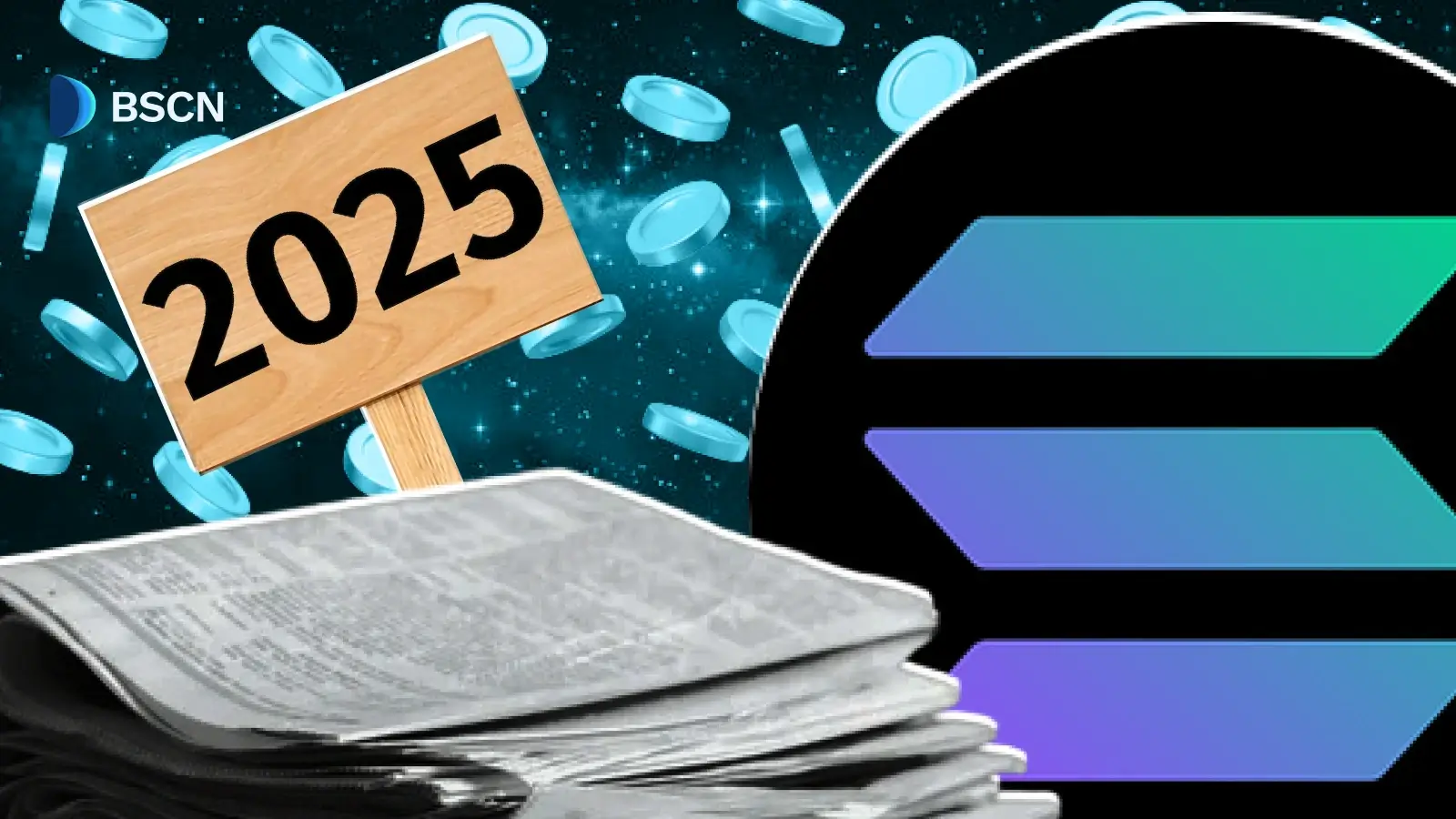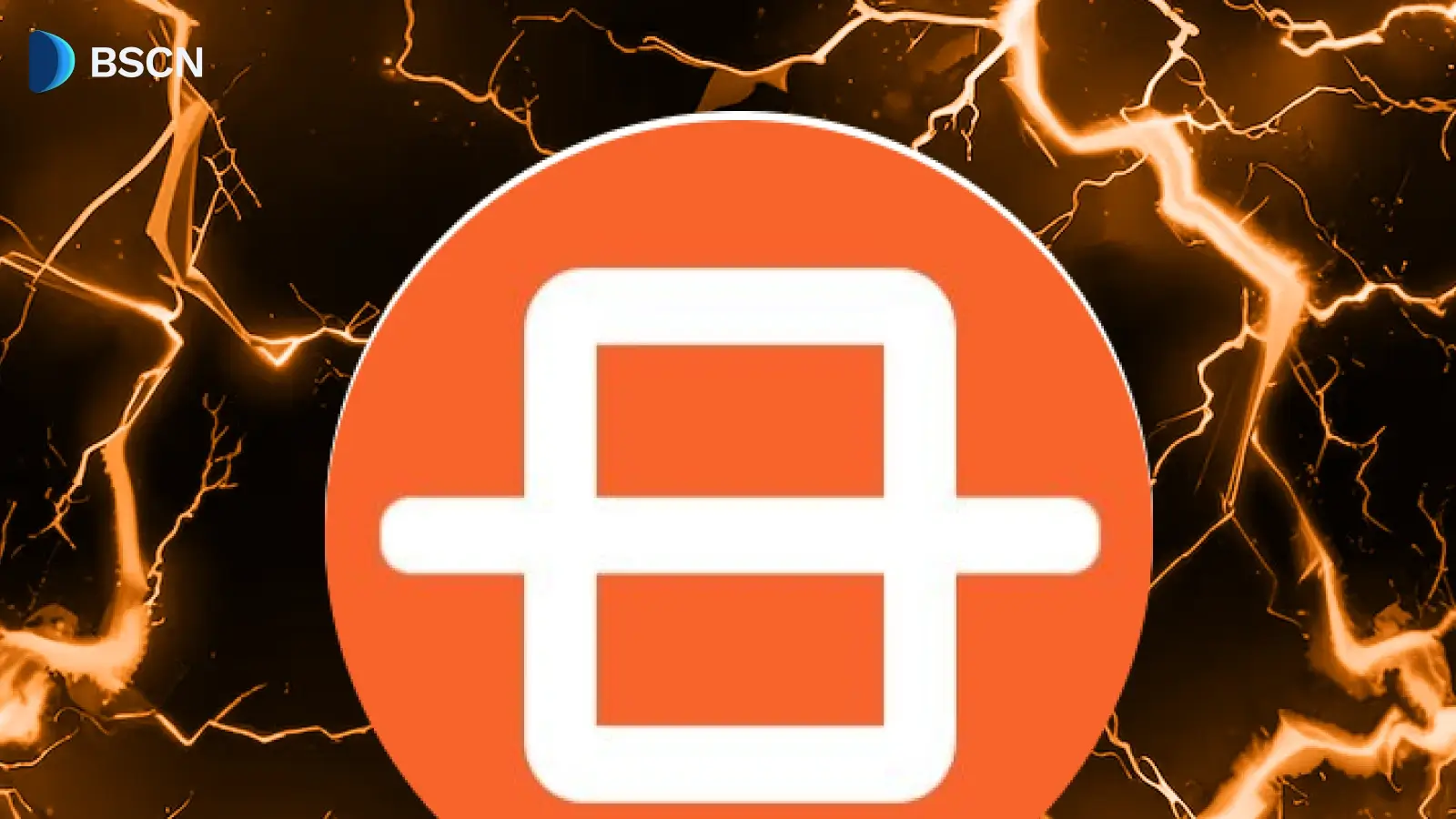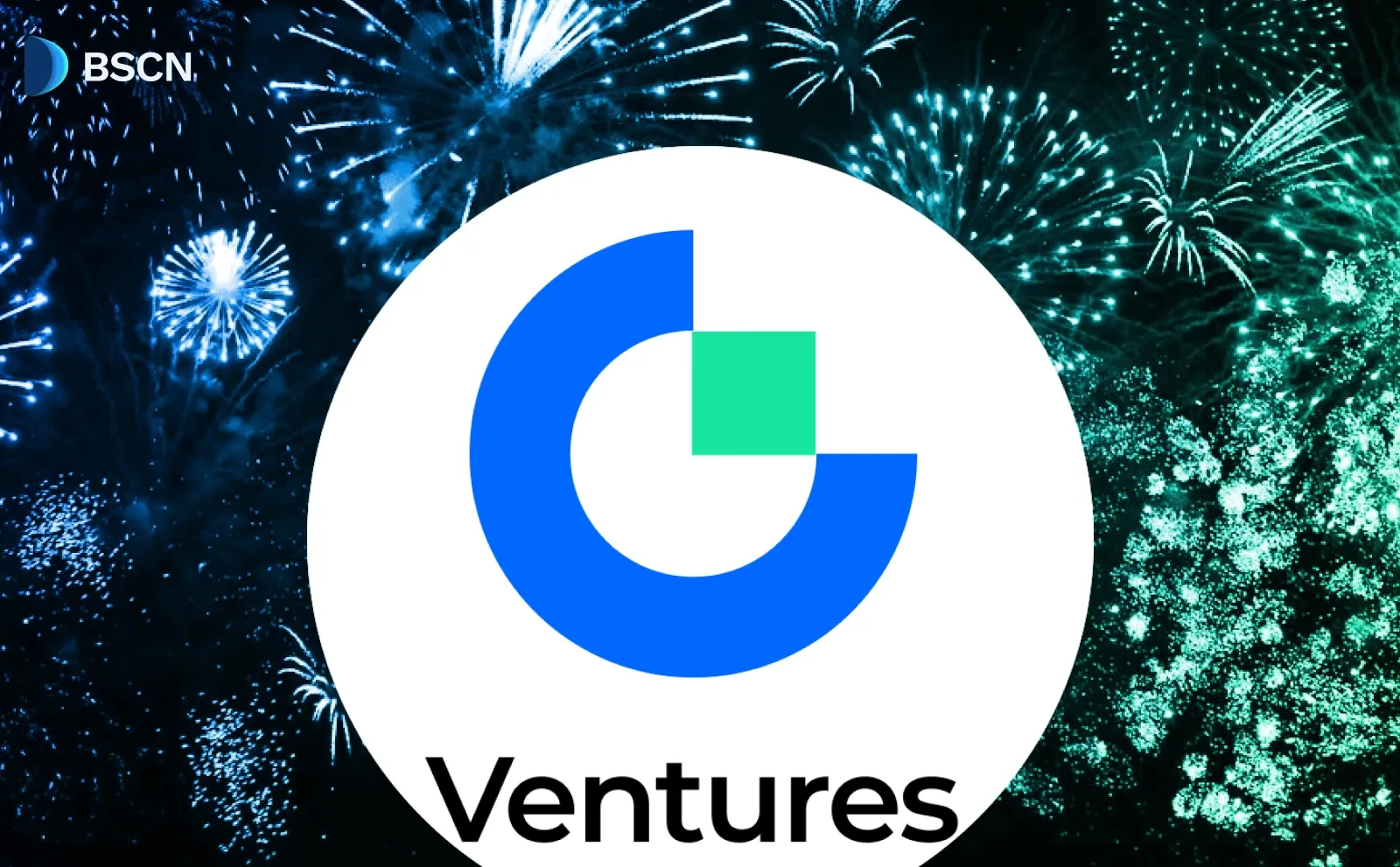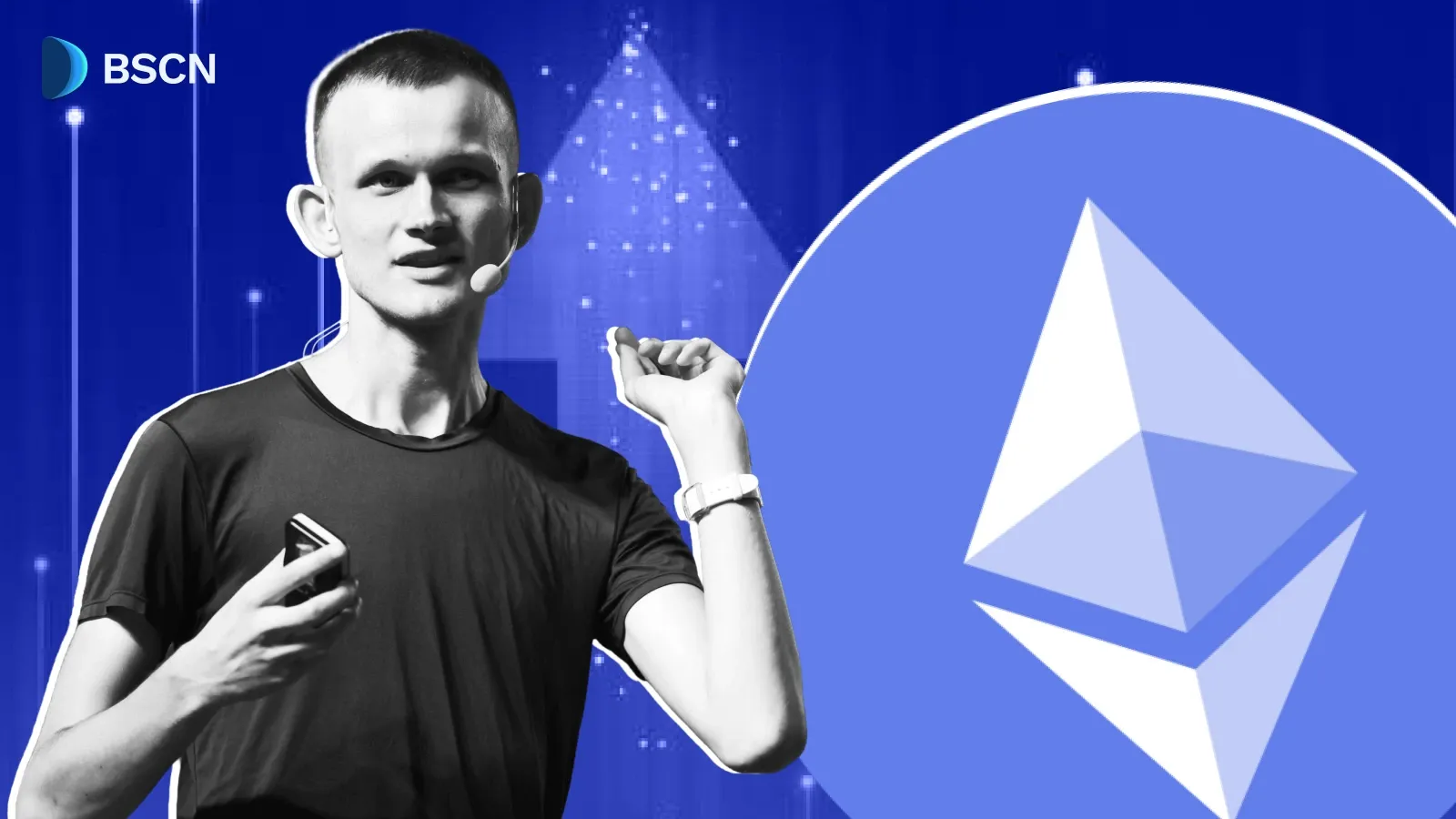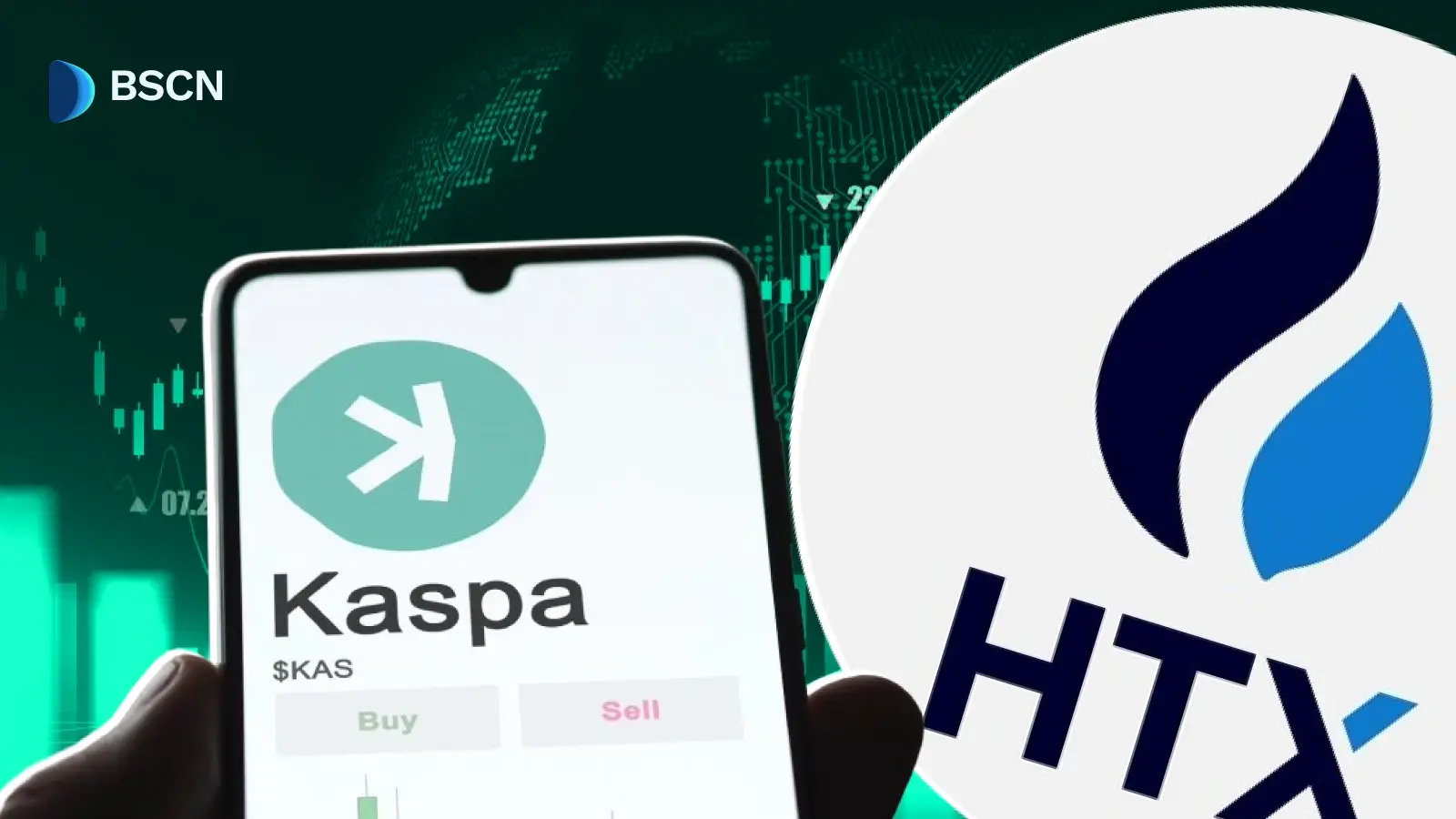Deepdive
(Advertisement)
Quilibrium Explained: The 'Internet of the Future'
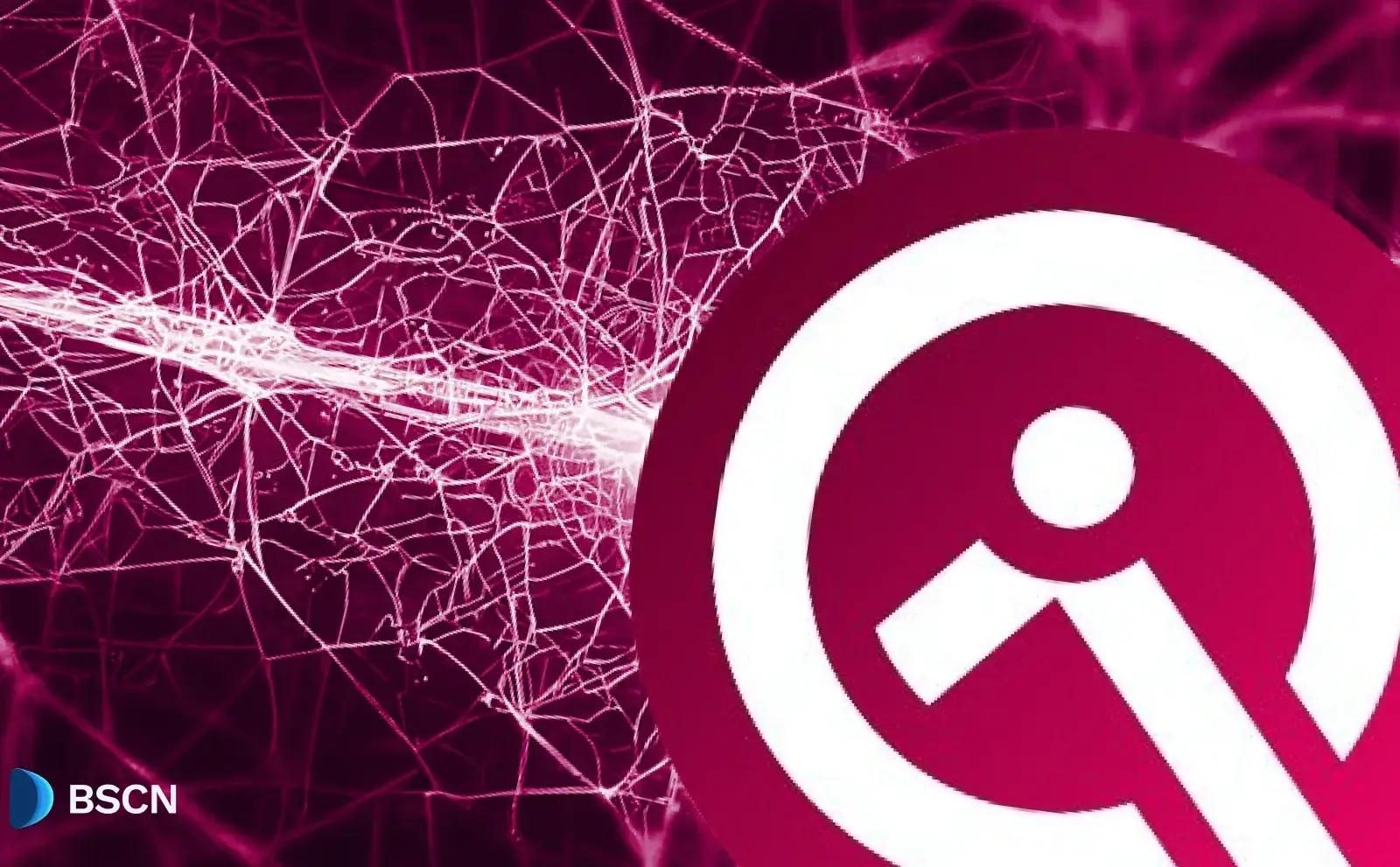
Quilibrium is a decentralized multi-party computation protocol securing web traffic, storage, and data flows for privacy-focused, scalable internet infrastructure
UC Hope
November 13, 2025
(Advertisement)
Table of Contents
In a world where centralized entities increasingly dictate online access and data handling, Quilibrium emerges as a multi-party computation protocol under active development, designed to secure web traffic by decentralizing servers, storage, and data flows.
Launched by founder Cassandra Heart, it directly confronts vulnerabilities exposed through whistleblower accounts and the content moderation practices of major providers, offering a pathway to a more private and resilient internet.
This article delves into the protocol's core structure, underlying technologies, and operational mechanics, based on its official documentation and recent updates.
What is Quilibrium?
Quilibrium is a decentralized network protocol focused on privacy and scalability. Development began in 2018, initially tied to creating a secure messaging alternative. By 2021, the project shifted toward full decentralization after recognizing limitations in centralized systems. Unlike traditional blockchain models, Quilibrium employs a structure that separates data clocks from a master clock, enabling coordinated sharding and higher throughput.
The protocol seeks to decentralize web elements, including traffic routing and data processing, without relying on trusted intermediaries. Companies like Cloudflare have faced criticism for their influence over content availability, prompting Quilibrium's emphasis on distributed control.
Quilibrium differentiates itself from other decentralized platforms in key aspects. Ethereum, for instance, supports smart contracts but encounters scalability issues, with privacy added retroactively. Solana competes in transaction speed but prioritizes financial applications over inherent privacy. Projects like Internet Computer from Dfinity use subnet scaling yet lack core privacy integrations.
Core Technologies in Quilibrium
Consensus Mechanism
The Quilibrium protocol employs a Proof of Meaningful Work consensus algorithm, which mandates that participants perform computational tasks with tangible value rather than arbitrary hashing. This approach ensures consensus by leveraging contributions that advance network operations, such as validating transactions or executing computations, thereby integrating utility with security.
Complementing this are Prover Networks, which consist of a distributed array of provers that validate and execute these computations across the network, enabling decentralized verification without centralized oversight. Additionally, the Frame-based Intervals model structures time into discrete execution slices, providing a deterministic ordering of operations that helps maintain consistency and predictability in the consensus process.
Cryptographic Foundation
At the core of the Quilibrium protocol's security is the use of BLS48-581 Signatures, an advanced cryptographic method for verifying transaction and data ownership and authorizing transactions, providing strong protection against forgery.
Ed448 Key Management leverages elliptic curve cryptography for access control, enabling secure key generation and management for nodes and users. Furthermore, Zero-Knowledge Proofs are integrated to enable privacy-preserving verification of computations, confirming the validity of operations without revealing underlying data, thereby supporting confidential and trustless interactions within the network.
Data Layer
The Data Layer in Quilibrium is built around a Hypergraph Structure, an advanced data model that facilitates complex relationships between entities, allowing for more flexible and interconnected storage compared to traditional graphs.
RDF Schema Validation is employed to enforce structured data with semantic meaning, ensuring that stored information adheres to defined schemas for consistency and queryability. All data benefits from Encryption at Rest, which provides built-in privacy protection by encrypting information when it is not in active use, safeguarding it from unauthorized access across the distributed system.
Network Architecture
Quilibrium's Network Architecture features Peer-to-Peer Communication, enabling decentralized interactions between nodes without relying on central servers, which enhances resilience and reduces points of failure. Sharding is implemented to achieve horizontal scalability by partitioning data and workloads across multiple subsets of the network, enabling efficient handling of growing demand.
Multi-Party Computation enables collaborative computation among network participants, allowing joint processing of data without exposing individual inputs and supporting secure, shared operations in a distributed environment.
Security Model
The Quilibrium protocol incorporates a multi-layered security model that includes Cryptographic Integrity, where all operations are signed and verified to prevent tampering or unauthorized changes. Network Consensus distributes agreement mechanisms across nodes to eliminate single points of failure and resist attacks like sybil or eclipse variants. Privacy by Design embeds protections through data encryption and zero-knowledge proofs, ensuring user data remains confidential during processing and storage. Economic Incentives align participant behavior with network health by rewarding honest contributions and penalizing malicious actions.
Performance Characteristics
- Quilibrium is optimized for High Throughput, capable of handling large-scale computational workloads efficiently through its consensus and execution mechanisms.
- Low Latency is achieved via the Frame-based processing model, which delivers predictable execution times by slicing operations into manageable intervals.
- Scalability is supported by Sharding and parallel processing, allowing the network to expand seamlessly as participant and data volumes increase.
- Efficiency is a key attribute, and Proof of Meaningful Work is designed to reduce energy waste by focusing computational effort on valuable tasks rather than redundant proofs.
How it Works
Quilibrium's operational mechanics revolve around a structured transaction-processing pipeline that ensures the secure, decentralized, and efficient handling of data and computations across the network. This flow begins with user-initiated actions and progresses through multiple validation and execution stages, culminating in a synchronized update of the overall network state.
By design, this process leverages distributed nodes and provers to maintain integrity without relying on centralized authorities, making it suitable for a wide range of decentralized applications.
The transaction processing sequence can be broken down into the following key steps:
- Transaction Initiation: Users start the process by submitting actions via tools such as the qclient or direct API calls. These actions could include data transfers, computations, or smart contract-like executions, all formatted in accordance with the protocol's specifications to ensure compatibility.
- Validation Phase: Upon receipt, network nodes perform initial checks on the transaction's syntax and cryptographic signatures. This step verifies that the submission adheres to protocol rules and originates from an authorized source, filtering out invalid or malicious inputs early in the cycle.
- Consensus Engagement: Provers, which are specialized participants in the network, then take over to achieve consensus. They order the validated transactions and confirm their inclusion in the network's ledger using the Proof of Meaningful Work mechanism, ensuring agreement across the distributed system.
- Execution Stage: Once consensus is reached, the transactions are executed within designated multi-party computation environments. These environments enable secure processing, allowing computations to occur collaboratively without exposing sensitive data.
- State Update and Propagation: Finally, the execution results update the global network state. This updated state is then propagated to all participating nodes, maintaining consistency and enabling subsequent transactions to build upon the latest verified information.
In terms of scalability, Quilibrium draws inspiration from shared-nothing architectures, akin to those employed in high-performance databases such as ScyllaDB. This design principle means that each node operates independently, without shared resources, facilitating seamless horizontal expansion as demand grows. As a result, the protocol is equipped to manage intensive workloads that would challenge many traditional decentralized systems.
Specific examples of supported workloads include:
- High-Volume Messaging: Processing up to 200,000 messages per second, making it viable for real-time chat applications like instant messengers or collaborative platforms.
- Large-Scale Data Storage: Managing petabytes of media content, which supports social media networks that host vast collections of images, videos, and other user-generated materials.
- Complex Computations: Evaluating intricate, customizable rules for massively multiplayer online games, where dynamic interactions require rapid and reliable processing.
From a structural perspective, Quilibrium diverges significantly from conventional blockchain architectures by eschewing linear blockchains in favor of a global proof sequencing system. This sequencing operates more like a timechain, a concept originally described by Satoshi Nakamoto for Bitcoin, where proofs are timestamped and linked in a way that emphasizes chronological integrity over rigid block structures. This reinvention allows for greater flexibility in data handling and reduces bottlenecks associated with traditional chains.
Privacy remains a core pillar of the protocol, integrated at multiple levels to protect users from surveillance and exploitation.
Key privacy features encompass:
- Traffic Anonymization: Employing techniques similar to those in the Tor network, which obscure the origins and paths of data packets to prevent tracking by intermediaries or observers.
- Protection Against Maximal Extractable Value (MEV) Attacks: Implementing analytic and transactional safeguards that mitigate front-running and other exploitative behaviors common in platforms like Ethereum, ensuring fair ordering and execution.
- Input Privacy via Multi-Party Confidential Compute: Utilizing an execution environment where multiple parties can compute on shared data without revealing individual inputs, thereby securing sensitive information during processing and collaboration.
The Quilibrium Ecosystem
The Quilibrium ecosystem features a collection of tools and applications that enable interaction with the decentralized protocol, with a focus on secure data management, key management, and private communication.
Key components include QConsole, which provides access to QStorage for storage operations and QKMS for key management, all operating on the network's distributed framework to ensure security via multi-party computation and encryption. Quorum Messenger serves as the primary communication tool, emphasizing privacy. These elements support developers and users in building and utilizing applications, as detailed in project updates and streams from 2025.
QConsole
QConsole serves as a central interface for managing interactions across the Quilibrium network, enabling users to handle tasks such as account setup, API access, and service integrations. Demonstrated in live streams in April 2025, it facilitates quick onboarding and operations such as hosting websites or launching tokens.
Users can create accounts efficiently and monitor token balances and network activity through its dashboard.
Features highlighted in project communications include:
- Website Hosting Capabilities: Users can upload content to buckets, such as a "docs-demo" for documentation pages, making deployment simpler than traditional services like Amazon S3.
- Token Creation and Management: It supports defining schemas for accounts and tokens, enabling the launch of custom tokens with controls such as pending transactions to avoid common issues seen on other platforms.
- Integration with Protocol Updates: Tied to version 2.1 releases, with walkthroughs covering development in QCL (Quilibrium Contract Language) for building secure applications.
Early acceptance testing completed by April 3, 2025, led to public beta signups, enhancing accessibility for node operators and developers.
QStorage
QStorage provides a decentralized storage solution compatible with S3 standards, integrated via QConsole for handling data persistence across the network. It utilizes the protocol's sharding and hypergraph for distributed file management, ensuring data availability and security.
Key features include:
- Bucket-Based Operations: Enables creation of storage buckets for hosting content, demonstrated in streams for uploading and deploying websites live.
- Scalability and Efficiency: Designed for large-scale use, supporting petabyte-level storage with low-latency access through the network's frame-based processing.
- Security Integration: Data is encrypted at rest, leveraging multi-party computation to maintain privacy during uploads and retrievals.
Testing for QStorage concluded alongside QConsole in early April 2025, with public beta access opening shortly after.
QKMS
QKMS offers a decentralized key management system accessible through QConsole, focused on secure handling of cryptographic keys for network operations. It supports key generation, distribution, and revocation without centralized vulnerabilities.
Key functionalities described in the project materials encompass:
- Key Lifecycle Controls: Manages the full lifecycle of keys, including secure sharing for collaborative tasks such as mutual transfers in token operations.
- Integration with MPC: Uses multi-party confidential compute to protect keys during use, ensuring privacy in airdrops and other distributions.
- Network Compatibility: Aligns with Ed448 and BLS48-581 cryptography standards for authorization and access.
Like other components, QKMS underwent early testing by April 2025, with beta availability for users to explore its features.
Quorum Messenger
Quorum Messenger is the decentralized, end-to-end encrypted messaging application built on the Quilibrium protocol, prioritizing user privacy by collecting no data and resisting censorship. The application supports large group chats with bandwidth efficiency matching direct messages, requiring no phone number for setup.
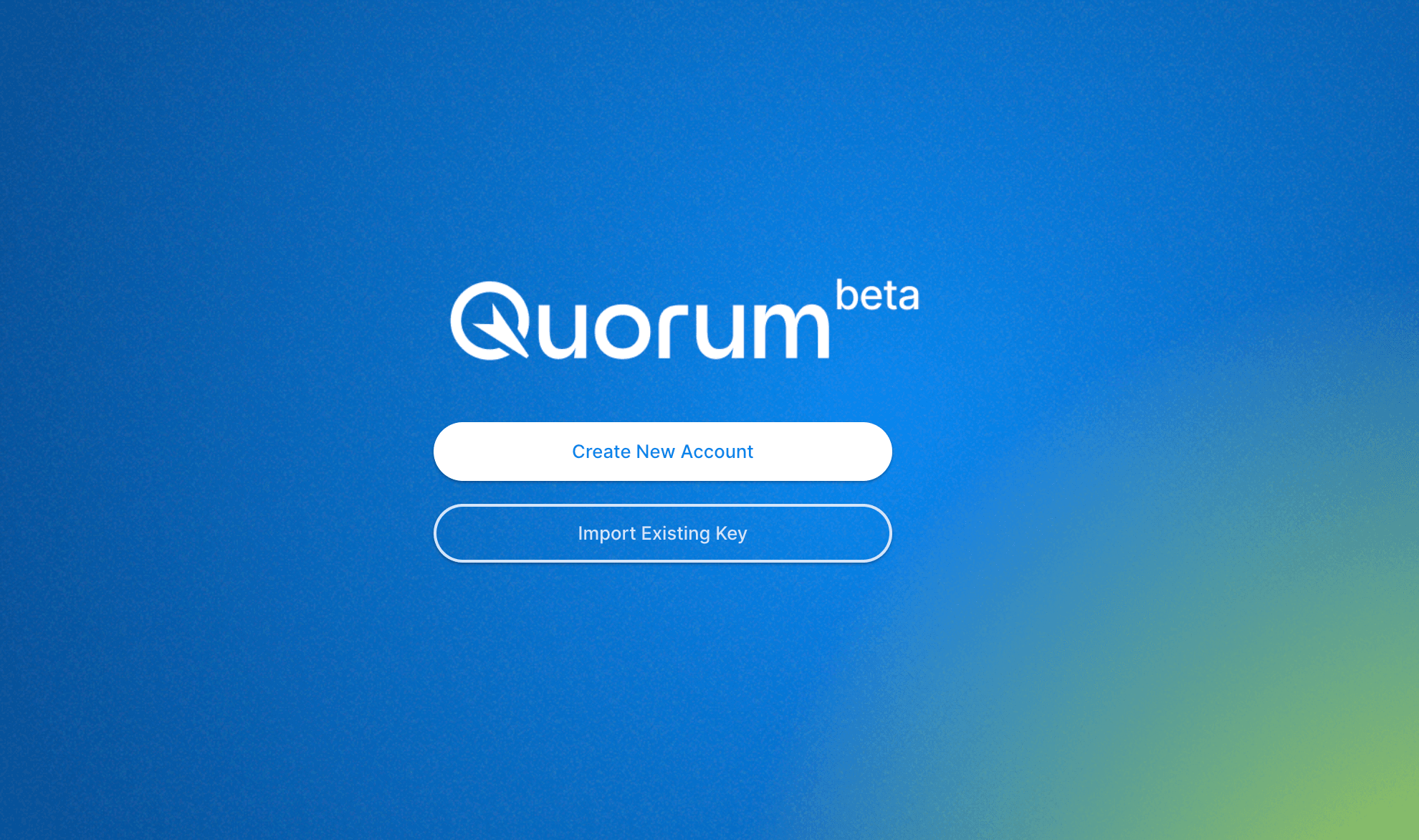
Account creation involves generating a passkey, setting a display name, and optionally adding a photo, shared only with contacts. No phone number or payment is required. The messenger integrates with the protocol's privacy features, ensuring encrypted communications. Mobile versions entered testing in early 2025, with beta launches announced for November 2025, including Farcaster protocol support for feeds and mini-apps, some of which support private routing.
Detailed features from recent announcements include:
- Setup and Usability: Involves creating a passkey, display name, and optional photo, shared only with contacts, allowing instant conversation joining.
- Privacy Enhancements: No metadata tracking, no central servers, and protections against exposure, making it suitable for sensitive discussions like cybersecurity.
- Mobile Beta and Integrations: Beta rollout began in April 2025 with additional slots opened due to demand, featuring Farcaster support for mini-apps, feeds, and private routing by November 2025. Sync fixes and updates were deployed to the web version in March 2025.
The Quilibrium Token and Tokenomics
The $QUIL token functions as a utility within the network, earned solely through mining without premines, venture allocations, or airdrops. Wrapped $wQUIL on Ethereum is used for bridging.
Tokenomics employs a generational issuance model that adjusts emissions based on network difficulty rather than fixed schedules.
- Current Generation Details: The current generation ends at 100 million iterations, projected for 2033, with emissions estimated at 1.6 to 1.7 billion tokens, diminishing as storage demands grow. Transaction fees increasingly incentivize miners.
Generations reset emissions temporarily at difficulty thresholds, reflecting advances in hardware and software. This sustains decentralization by incentivizing ongoing participation.
Gas fees operate in a dynamic market, supporting network operations.
- Circulating Supply: Stood at approximately 1.3 billion in October 2025, with dashboard updates providing real-time figures.
Future generations follow similar patterns, ensuring balanced rewards across eras.
Roadmap and Current Status
Quilibrium's development timeline outlines a multi-year progression from conceptual origins to sophisticated decentralized infrastructure, incorporating iterative phases that address technical challenges in privacy, scalability, and security. This roadmap reflects a deliberate shift toward robust, privacy-centric design, with milestones marked by redesigns, global events, and phased rollouts.
As of writing, the protocol has advanced to active mainnet operations, with ongoing enrollments and upcoming service integrations signaling continued momentum. The timeline is divided into distinct phases, each building on prior achievements to enhance network capabilities.
Birth Phase (2018)
The inception of Quilibrium occurred in 2018, when lead developer Cassandra Heart conceptualized the project while developing components for a private and secure alternative to platforms like Discord, initially named "Howler" and later rebranded as Quorum Messenger. This early stage focused on addressing fundamental needs for encrypted communication, laying the groundwork for broader decentralization efforts.
Key aspects of this phase include:
- Ideation and Prototyping: Heart explored modular network security components, emphasizing end-to-end encryption and peer-to-peer interactions to create a safer messaging environment.
- Foundation for Privacy: Initial work prioritized user anonymity, setting the tone for Quilibrium's core mission to secure web traffic without reliance on centralized authorities.
Pivot to Decentralization (August 2021)
By August 2021, Quilibrium underwent a significant strategic shift, publicly declared by Heart as a pivot toward full decentralization. This decision stemmed from realizations about the excessive control centralized entities exert over user freedoms, extending beyond mere messaging alternatives to encompass a reimagined internet infrastructure.
This phase highlighted:
- Recognition of Centralized Risks: Influenced by broader industry concerns, such as content deplatforming and surveillance revelations, the project refocused on eliminating trusted intermediaries.
- Commitment to User Sovereignty: The declaration marked a departure from hybrid models, committing to a fully distributed system resistant to censorship and manipulation.
Redesign Phase (2019-2022)
This intensive redesign period transformed Quilibrium from a blockchain-like structure into a novel architecture. Key innovations included separating data clocks from the master clock, resolving sharding coordination issues, and boosting overall throughput.
Details of the redesign encompass:
- Architectural Overhaul: Moving away from traditional linear blockchains, the team implemented a global proof sequencing similar to a timechain, enabling more efficient data handling.
- Sharding and Throughput Improvements: These changes enabled horizontal scalability, supporting high-volume workloads such as messaging and media storage while maintaining privacy.
The Ceremony (April 2023)
In April 2023, Quilibrium hosted a global entropy-gathering event known as "The Ceremony" to bolster network proof-of-security. Designed for participation across various devices and locations, it collected contributions from nearly all non-embargoed countries, resulting in roughly twice the entropy inputs as Ethereum's similar event.
Highlights of this milestone:
- Worldwide Participation: The event ensured diverse and robust randomness for cryptographic proofs, enhancing resistance to attacks.
- Security Foundation: By aggregating global inputs, it established a secure base for verifiable delay functions and consensus mechanisms.
Dawn Phase (September 2023 - February 2024)
The Dawn phase, from September 2023 to February 2024, involved rigorous stress-testing of core components, including Byzantine Fault Tolerant (BFT) consensus and multi-platform compatibility. This period featured constant rewrites and optimizations to push the protocol to its limits.
Key activities included:
- Consensus Testing: Evaluating the Proof of Meaningful Work algorithm under simulated high-load conditions to verify decentralization.
- Compatibility Enhancements: Ensuring seamless operation across different hardware and software environments, preparing for broader adoption.
Dusk Phase (March 2024 - October 2024)
From March to October 2024, the Dusk phase gradually introduced essential components for mainnet readiness, including autoscaling, hypergraph data structures, onion routing, and a mixnet for privacy-preserving traffic. This era included sub-updates named Sunset, Nightfall, and Midnight, culminating in the mainnet transition.
Components rolled out:
- Autoscaling and Hypergraph: Enabled dynamic resource allocation and complex data relationships for efficient storage and querying.
- Routing and Mixnet: Implemented anonymization techniques akin to Tor, protecting traffic from surveillance.
Ethereum Bridge (May 13, 2024)
On May 13, 2024, the Ethereum bridge was deployed in its first version, allowing early node runners to claim wrapped $QUIL tokens ($wQUIL). This facilitated interoperability with Ethereum, supporting token transfers and liquidity.
Midnight Phase (Q4 2024 - Q1 2025)
The Midnight phase marked the initial mainnet deployment in Q4 2024 on a single shard, enabling automatic token minting to keyed accounts, along with permissionless splitting, consolidating, querying, and transferring of tokens. It also launched Quorum Messenger as the first live application.
In Q1 2025, the final elements of Dusk were completed, transitioning to full stealth mode with encrypted transactions, multi-sharding for scalability, and permissionless application deployments. This included the rollout of the QStorage and QKMS APIs, alongside qConsole for management, and the entry of Quorum Messenger mobile apps into testing.
- Single-Shard Operations: Focused on core token functionalities and initial app integration.
- Full Encryption and Multi-Sharding: Enhanced privacy and capacity, allowing developers to transmit and stream data securely.
- API and Mobile Deployments: Introduced tools for storage, key management, and mobile access, broadening usability.
Equinox Phase (Timeline TBD)
The Equinox phase, with an estimated timeline yet to be determined, aims to establish foundational services for practical decentralized applications. This includes lambda-style functions for serverless computing and Redis-like databases for fast, distributed data access.
Anticipated developments:
- Service-Oriented Tools: Creating a versatile toolkit for building decentralized applications, akin to a Swiss Army knife for services.
- Focus on Usability: Prioritizing components that support real-world use cases in computation and storage.
Event Horizon Phase (Timeline TBD)
Event Horizon represents an advanced stage with no timeline aswell, introducing high-level features such as end-to-end encrypted streaming, distributed AI model training, and execution environments. This phase positions Quilibrium as the basis for a decentralized operating system.
Advanced capabilities:
- Encrypted Media and AI: Enabling secure streaming and collaborative AI processes without exposing data.
- OS-Like Framework: Building toward a comprehensive system for running decentralized applications at scale.
As of November 12, 2025, initial enrollment for version 2.1 is nearing completion. Furthermore, the Quorum Mobile Beta is slated for launch later in the week, featuring Farcaster integration for mini-apps, feeds, and privately routed traffic for native applications.
Final Thoughts
In summary, Quilibrium delivers a robust, decentralized multi-party computation protocol that embeds privacy at every layer, achieving scalability through sharding, a shared-nothing architecture, and Proof of Meaningful Work consensus. It powers applications such as Quorum Messenger for secure, large-scale group chats.
The adaptive generational tokenomics, tied to computational milestones, alongside a phased roadmap from inception in 2018 to advanced AI integrations, ensures sustained security, fair miner participation, and resistance to centralization seen in traditional blockchains like Bitcoin.
Sources
- Website: https://quilibrium.com/
- Overview of Quilibruim: https://medium.com/%40Qrim/quilibrium-network-a-new-era-in-decentralized-computing-04e8adcb8c31
- Wrapped QUIL: https://www.coingecko.com/en/coins/wrapped-quil
- Quilibrium Documentation: https://docs.quilibrium.com/docs/discover/security-audits-of-quilibriums-cryptographic-protocols/
- Quorum Messenger: https://www.quorummessenger.com/
- Network Dashboard: https://dashboard.quilibrium.com/
Read Next...
Frequently Asked Questions
What distinguishes Quilibrium from Ethereum or Solana?
Quilibrium prioritizes built-in privacy through multi-party computation and traffic anonymization, unlike Ethereum's scalability challenges or Solana's finance focus, using a sharded structure for decentralization.
How does Proof of Meaningful Work function in Quilibrium?
It distributes mining via shards with unique proofs and encrypted data, adjusting difficulty by hardware and rewarding verifiable contributions to prevent pool dominance.
What is the role of $QUIL in the network?
$QUIL serves as a utility token mined for network operations, with emissions tied to computational milestones in a generational model to sustain incentives.
Disclaimer
Disclaimer: The views expressed in this article do not necessarily represent the views of BSCN. The information provided in this article is for educational and entertainment purposes only and should not be construed as investment advice, or advice of any kind. BSCN assumes no responsibility for any investment decisions made based on the information provided in this article. If you believe that the article should be amended, please reach out to the BSCN team by emailing [email protected].
Author
 UC Hope
UC HopeUC holds a bachelor’s degree in Physics and has been a crypto researcher since 2020. UC was a professional writer before entering the cryptocurrency industry, but was drawn to blockchain technology by its high potential. UC has written for the likes of Cryptopolitan, as well as BSCN. He has a wide area of expertise, covering centralized and decentralized finance, as well as altcoins.
(Advertisement)
Latest News
(Advertisement)
Crypto Project & Token Reviews
Project & Token Reviews
Comprehensive reviews of crypto's most interesting projects and assets
Learn about the hottest projects & tokens




